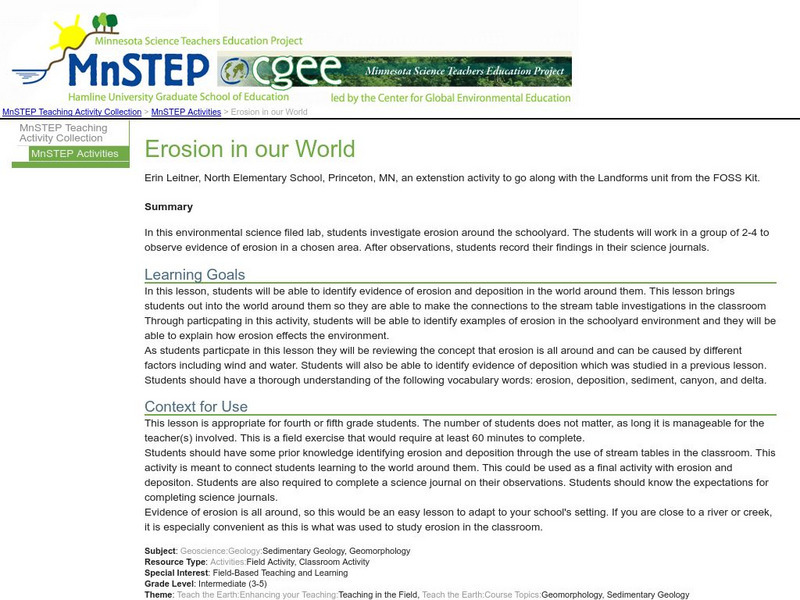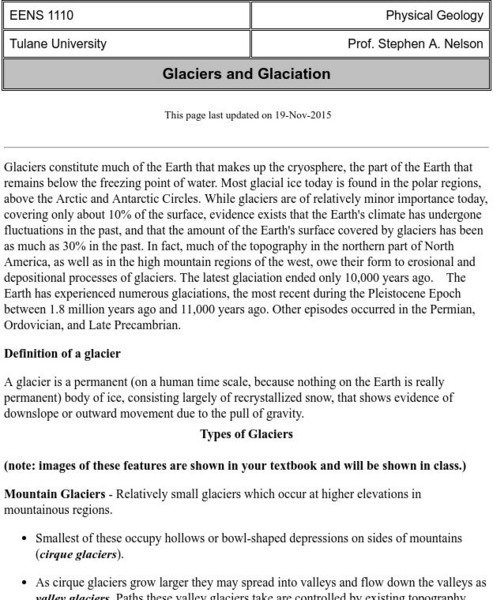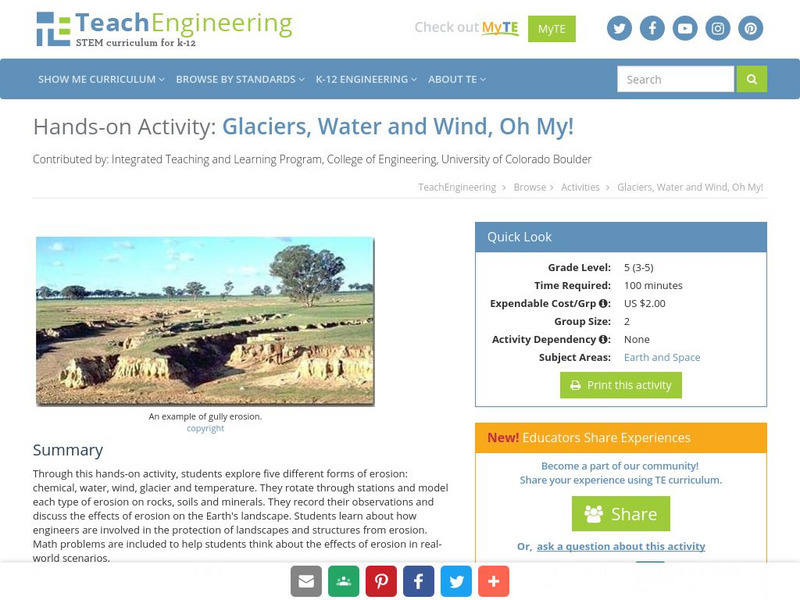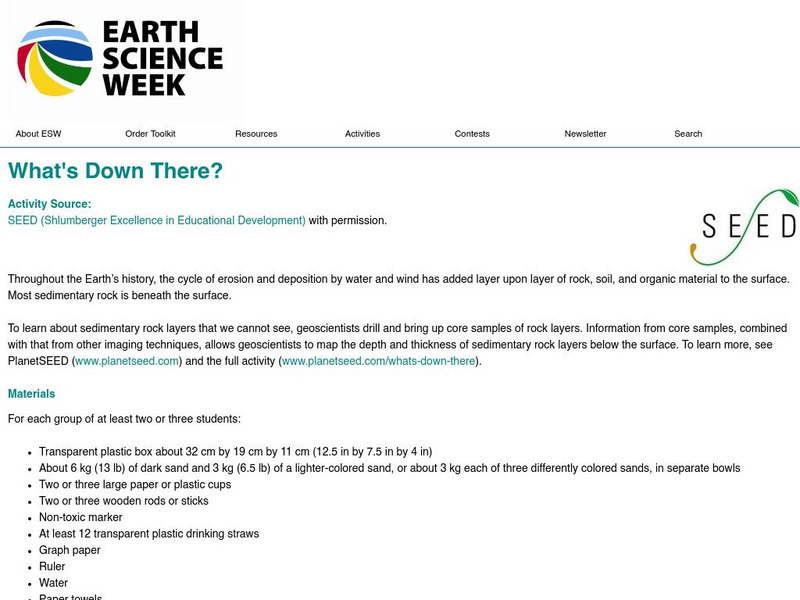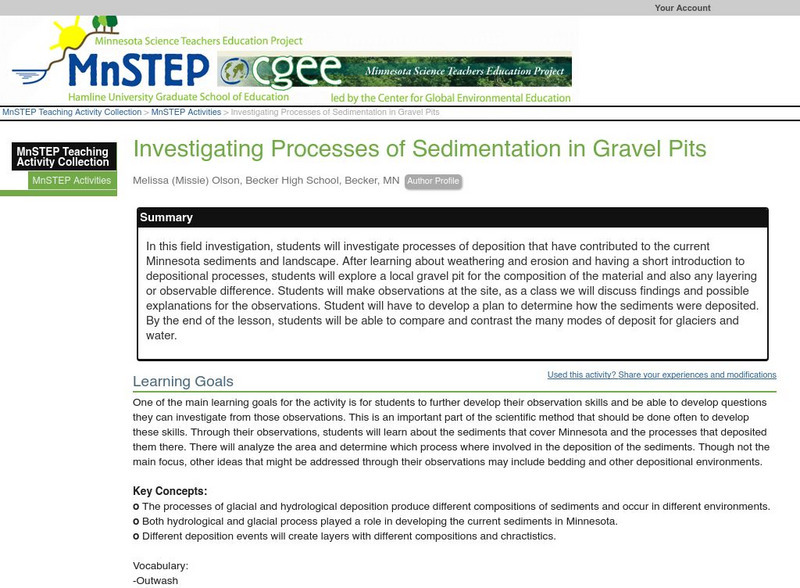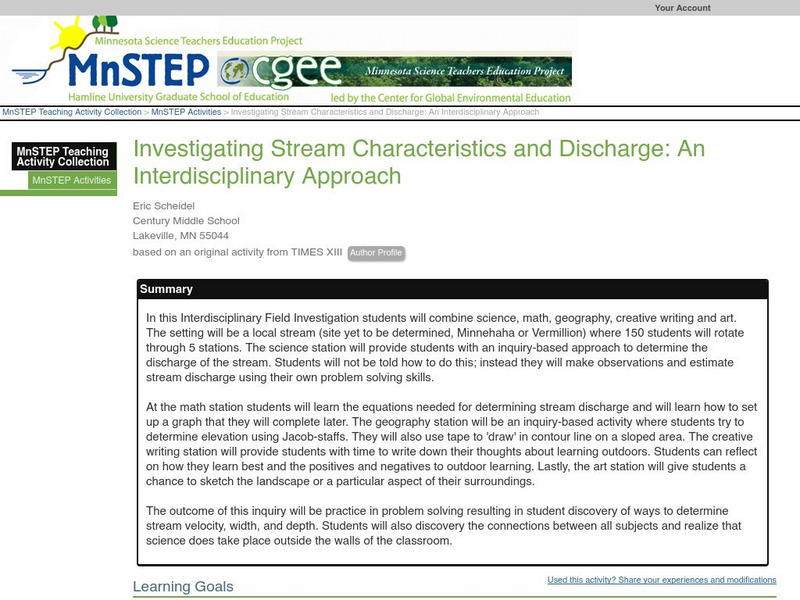Hi, what do you want to do?
Curated OER
Ride the Rock Cycle
Young scholars identify the steps in the rock cycle. They complete a K-W-L chart before the instructional activity begins. They answer questions about the stages to complete the instructional activity.
Curated OER
Sequence of Events Practice 3-Rock Layers
In this rock layer worksheet, students are given a diagram showing a pattern of rock layers from oldest to youngest. Students list the sequence of events that occurred in order to form the pattern shown.
Curated OER
Let's Go! Virtual Yellowstone Tour
Students research the geologic wonders of Yellowstone National Park. They locate the main geologic features of Yellowstone on a map of the park. Students write a description of the geologic features to be included on the map for a...
Curated OER
Dino Fossils
Primary paleontologists discover the information they can gather from examining fossils. They place pictures in the correct sequence showing how an animal becomes a fossil. They discuss which sediments would preserve fossils better as well.
Curated OER
Mesozoic Era in Arkansas
Eighth graders study the geology of Arkansas from 225 million years ago to 65 million years ago. They discover they types of strata laid down by the Gulf of Mexico. They examine the economic importance to the community.
Curated OER
Science Test-Grade 5
In this grade 5 science test worksheet, 5th graders complete a 30 question multiple choice quiz covering a variety of grade 5 concepts.
Curated OER
Ride the Rock Cycle
Students examine the steps of the rock cycle. They describe what happens to the rocks in each of the stages. They participate in a rock cycle game to help them with the steps.
Curated OER
Sedimentary Rocks Worksheet
In this geology lab worksheet, learners answer 31 short answer questions about sedimentary rocks. Teacher needs to provide text or internet site for students to find answers.
CK-12 Foundation
Ck 12: Fourth Grade: Earth Science: Erosion and Deposition by Flowing Water
[Free Registration/Login may be required to access all resource tools.] Discusses how flowing water causes erosion; describes how runoff, streams, and rivers change Earth's surface; and identifies features caused by groundwater erosion.
Science Education Resource Center at Carleton College
Serc: Erosion in Our World
Young scholars collect evidence to investigate erosion and deposition around the schoolyard.
Other
Watersheds.org: A Stream Table Makes a Miniature Stream
See a stream table being made and learn what a real stream does to the land.
PBS
Pbs Learning Media: Coastal Geological Processes
This interactive resource adapted from the National Park Service describes the many forces that affect shorelines, including tides, weathering, erosion, and deposition. Includes background reading handout and discussion questions.
Alabama Learning Exchange
Alex: Washed Away
In this lesson, students will learn about water erosion. They will view pictures and videos, complete drawings, and work in collaborative groups as they research types of water erosion (rill, gully, sheet, and channel). Students will...
Other
Tulane University: Physical Geology: Glaciers and Glaciation
Lots of information here about glaciation, types of glaciers, the formation of glacial ice, changes in glacier size, how glaciers move, glacial erosion, landforms produced by glaciers, glacial deposition and drift, effects of glaciation...
TeachEngineering
Teach Engineering: Glaciers, Water and Wind, Oh My!
This hands-on activity explores five different forms of erosion (chemical, water, wind, glacier and temperature). Students rotate through stations and model each type of erosion on rocks, soils and minerals. The students record their...
Science Education Resource Center at Carleton College
Serc: Investigation Erosion in Our World
In this lab activity, students will look for evidence of erosion in river or streams. This activity should take place after students have observed erosion in a model.
American Geosciences Institute
American Geosciences Institute: Earth Science Week: What's Down There?
Students build a model to learn about the cycle of erosion and deposition by water and wind which deposits layer upon layer of rock, soil, and organic material to the surface.
Science Education Resource Center at Carleton College
Serc: Investigating Processes of Sedimentation in Gravel Pits
For this field investigation, young scholars will investigate processes of deposition that have contributed to the current Minnesota sediments and landscape. After learning about weathering and erosion and having a short introduction to...
TeachEngineering
Teach Engineering: The Earth Is a Changin'
This lesson introduces and describes the main types of erosion (i.e., chemical, water, wind, glacier and temperature). Students learn examples of each type of erosion and discuss how erosion changes the surface of the Earth. Students...
Science Education Resource Center at Carleton College
Serc: Investigating Stream Char and Discharge: Interdisciplinary Approach
In this Interdisciplinary Field Investigation students will combine science, math, geography, creative writing and art. The setting will be a local stream (site yet to be determined, Minnehaha or Vermillion) where 150 students will...
Science Struck
Science Struck: Understanding Deposition in Geology
Explains what is meant by the deposition of sediments by wind and water and provides examples of the resulting landforms.
ClassFlow
Class Flow: Rivers 2
[Free Registration/Login Required] In this lesson students evaluate the water cycle and how rivers erode, transport, and deposit materials to produce physical features. Many slides and aerial photos of flooding and riverbanks are...
National Association of Geoscience Teachers
Nagt: Variable Rivers
In this lesson young scholars will be introduced to rivers and river processes. They will test an isolated variable in rivers and they will test either the amount of water, velocity of water, or steepness of the river bed to determine...














